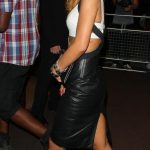Menswear has always been heavily influenced by military styles, from shirts (read CPO-inspired styles) to pants (cargo pants and chinos). And accessories and outerwear are no exception. Nothing beats the authentic structure and timeless design of an army jacket, whether you’re an Air Force/Navy member or you just like shopping from military stores. Let’s examine the most recognisable military coats that are also available for menswear in the civilian world.
The Different Types of Military Jackets
There are many different military jacket types. You’d be surprised to learn that many of our favourite outerwear items, such as pea coats and field jackets, have military origins. And while some fads are here to stay and others might not last that long, one thing is certain: a military jacket is always in style. Also, you don’t need to be in the Air Force to benefit from all that a leather bomber jacket has to offer.
Flight

Given its name, a high-quality flight jacket is both warm and durable enough for flight crews to wear. Perhaps more than any other item of military gear, bomber jackets have come to represent masculine fashion.
Air Force A2
The Air Force A2 leather jacket is the most popular style of military jacket, and its fame has been influencing both military personnel and civilians for many years. In 1931, the USA Army Air Corps first introduced it as “Jacket, Flying, Type A-2.” The Type-2 flying jacket’s robust fasteners and strengthened pockets are characteristics indicative of its intended use in open cockpits, which superseded the Type A-1 model. The relatively utilitarian, slim-cut collar was perfect for the small cockpit, and it could be entirely closed to protect the wearer from the wind.
Epaulettes (shoulder flaps), tight, ribbed wool cuffs, front pockets with pointed flaps, riveted eyelets beneath each armpit, and a collar that buttoned down like a shirt were all distinctive design elements of the Type A-2. Made of seal-brown horsehide at the time, it was lined with light brown spun silk, which was reasonably priced. Some coats had exquisitely painted artwork on the backs. The military air force jacket had some minor redesigns over time, and new materials were found to be used in its construction. As a result, cotton linings and goat leather are now acceptable in the Type A-2 jacket criteria.
MA-1
Another recognisable military-type jacket that you’ll undoubtedly see everywhere is the MA-1 flying jacket. The emergence of jet aircraft prompted the creation of the MA-1 at first. They exposed pilots to colder weather since they flew higher and quicker. When the MA-1 got wet, unlike earlier leather versions (like the A2), it wouldn’t freeze.
The new jet cockpits were also significantly smaller. The military jackets of the past were too stiff and cumbersome for men to move around comfortably. The same knit ribbing around the cuffs and waist was used to shorten the MA-1 waist length once the leather was swapped out for a nylon or polyester shell. The MA-1 collar has more knit ribbing around the neck than a shirting collar. Additionally, it has a distinctive pocket on one sleeve’s bicep in addition to hand warmer pockets.
High fashion designer Helmut Lang has been a major user of the MA-1 military jacket, which has been popular in civilian fashion since the 1970s and is experiencing a rebirth. Furthermore, in recent times, celebrities such as A$AP Rocky and Kanye West have incorporated it into their street style.
B-3 And B-6 Bomber Jacket
Although certain flying jackets, such as the MA-1, have been called “bombers,” the B-3, which was initially released in the middle of the 1930s, is the actual winner of the title “bomber jacket.” Their original purpose was to support aircraft bombers that were travelling up to 25,000 feet in uninsulated planes, reaching progressively higher altitudes. These B-3 bombers were heavy and had sheepskin leather and sheep fur lining because being warm and dry was crucial. Its large fur-lined collar, which has two straps to close the open collar when necessary, is one of its most distinctive features.
The B-6 bomber, which debuted in the 1940s, was the B-3’s replacement. The B-6 bomber retained much of the B-3’s warmth, style, and design while being lighter as pilots’ conditions during flight improved.
Field

M-51
The M-51 is probably what you picture when you think of the traditional men’s military jacket. It has a valid cause for being iconic. The M-51 is a midweight canvas garment most frequently available in olive green. Compared to the M-65, its shirt-jacket collar is more appropriate for casual settings. The M-51 was originally released without a hood, but one was provided and fastened to the jacket collar. Four pouch pockets, removable liner, snap fastening and button cuffs are other noticeable details of this jacket.
M-65
The development of the M-65 field jacket was an advancement over the M-51 model. With a few significant adjustments, it maintains many of the same features. It usually comes in the traditional army green colour and has four pouch compartments. The collar had significant modifications aside from the hood. Instead of being a pointed shirt collar, it became a stand collar. It has velcro fasteners in place of the button cuffs and collar closures.
The M-65 was first made available in 1965, as its name suggests, and American soldiers used it extensively throughout the Vietnam War. Pop and movie stars have worn the M-65 army jacket over the years; the most notable being Robert DeNiro’s portrayal of Travis Bickle in Taxi Driver.
Military Naval Coats

The Duffle Coat
The phrase “Duffle Coat” has evolved to denote a certain fashion. However, the term initially hinted at the particular kind of material—a dense wool—that was created in Duffel, Belgium. Nowadays, a broad range of materials, but often still made of wool, are available for duffle coats. And now the toggle closures are the distinguishing features. Their construction consists of wood attached to leather or rope loops. Most duffle coats have a more boxy form, are thigh-length, and have hoods.
The Pea Coat
A mainstay of naval uniform, the pea coat is similar to the duffle coat. Their American equivalents later modified it from its original British Royal Navy form. Newspapers in America began to mention the garment in the 1720s.
The duffle coat’s purpose and the cloth used to create the pea coat are comparable, if not the same. Thus the specifics are where the differences exist. Pea jackets have large lapels, a shorter length, and a double-breasted closing. Some variants reach the knees; these are commonly called “officer’s coats,” so named because they are part of the uniforms worn by senior naval officers. There are differing views regarding the name’s origin. Many think it’s an acronym for “Pilot-Cloth,” which was once commonly used to make pea jackets; it subsequently became “P-Cloth” and finally “P-Coat.”





















